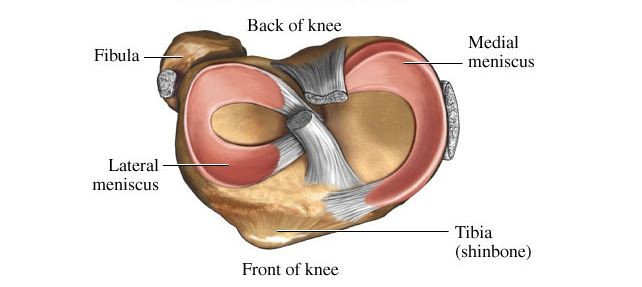Three out of four people might avoid knee surgery with a new form of exercise therapy, says a new study of patients in Norway and Denmark.
The study, which involved 140 patients with meniscus injuries in Norway and Denmark, shows exercise therapy is just as effective for treating meniscus injuries as surgery. A reduced number of arthroscopic procedures for meniscus injuries might also lead to substantial savings.
What the study shows is there is no difference between surgery and exercise, said Dr. Nina Jullum Kise, a PhD candidate and orthopaedic surgeon who is senior consultant at the Department of Orthopaedic Surgery, Martina Hansen's Hospital in Bærum, Norway. The study is the first to compare cases where the patient had only exercise therapy or only surgery.
A tear of a meniscus or a meniscal tear is a rupturing of one or more of the fibrocartilage strips in the knee called menisci. This injury can cause the knee to give way or to lock-up. Menisci are crescent-shaped discs of cartilage on both sides of the knee joint.
The meniscus is a shock absorber that distributes weight across the joint and at the same time stabilizes the joint when a person walks or runs.
The study showed that after two years later, both groups of patients had fewer symptoms and improved functioning. There was no difference between the two groups.
Those who had exercised, however, developed greater muscular strength. This is consistent with previous research showing surgery yielded no additional benefits for patients who had had exercise therapy.
Dr. Jullum Kise believes as many as three in four persons could be spared surgery with the right exercise therapy program. She noted, however, that the general trend is to place more patients on exercise therapy programs and delay surgery.
In 2015 almost 11 000 people in Norway underwent arthroscopic meniscus repair, a form of keyhole surgery. A single meniscus operation is estimated to cost Norwegian taxpayers in excess of S1,900.
Dr. Jullum Kise believes reducing the number of surgical meniscus repairs would thus lead to significant savings for society.
In the study, patients attended training sessions with a physiotherapist two to three times a week for 12 weeks. The exercise therapy program involves a warm-up and various types of strength training. It is built up in stages that become more challenging as the patient improves and becomes stronger
Each patient receives a personalized training program and learns to do the exercises under the supervision of a physiotherapist. Once they have learned the exercises, they train on their own but attend weekly sessions with the physiotherapist for adjustments and to be given new exercises.
"We hope that the stronger muscles of the exercise therapy group may counteract osteoarthritis, a type of arthritis that often occurs in patients who have undergone surgery for a meniscus injury," said Dr. Jullum Kise.



























